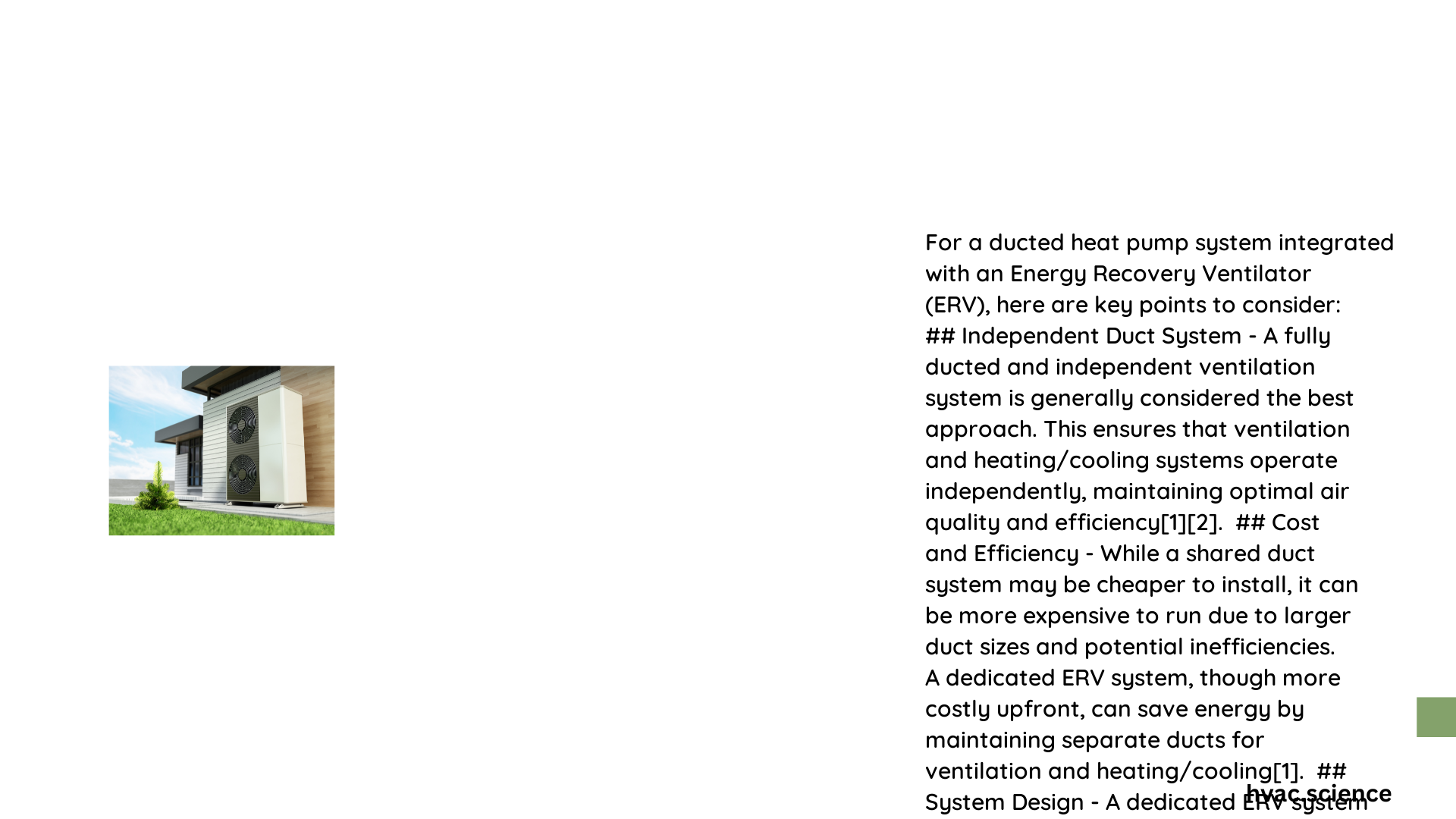A ducted heat pump with ERV represents a cutting-edge home comfort solution that seamlessly integrates heating, cooling, and ventilation technologies. This advanced system combines the energy-efficient performance of a heat pump with an Energy Recovery Ventilator (ERV), providing optimal temperature control, superior air quality, and significant energy savings for residential and commercial spaces.
What Makes a Ducted Heat Pump with ERV Unique?
How Does the System Work?
A ducted heat pump with ERV operates through a sophisticated mechanism of heat transfer and air exchange. The heat pump transfers thermal energy between indoor and outdoor environments, while the ERV manages air quality by exchanging heat and moisture between incoming and outgoing air streams.
Key Components
- Outdoor unit (condenser)
- Indoor air handler
- Comprehensive ductwork system
- Energy Recovery Ventilator (ERV)
- Advanced control systems
What Are the Primary Installation Considerations?
Property Assessment Factors
- Insulation Quality
- Evaluate building envelope integrity
- Check existing thermal performance
-
Identify potential energy loss areas
-
Space Requirements
- Minimum 3-foot clearance for outdoor unit
- Proper ductwork routing
- Electrical infrastructure compatibility
What Performance Metrics Should You Expect?
| Efficiency Metric | Typical Range | Potential with ERV |
|---|---|---|
| SEER Rating | 14-20 | 18-22 |
| HSPF Rating | 8-12 | 10-14 |
| Annual Energy Savings | $300-$600 | $500-$800 |
How Does ERV Enhance System Performance?
The Energy Recovery Ventilator provides multiple performance benefits:
– Reduces humidity fluctuations
– Minimizes indoor air pollutants
– Optimizes temperature transitions
– Decreases overall energy consumption
What Are Maintenance Requirements?
Recommended Maintenance Schedule
- Monthly:
- Visual system inspection
- Filter preliminary check
- Quarterly:
- Filter replacement
- Ductwork preliminary assessment
- Annually:
- Professional comprehensive system evaluation
- ERV core cleaning
- Electrical connection verification
What Cost Considerations Exist?
Total Investment Breakdown
- Equipment Costs: $8,000 – $15,000
- Labor Expenses: $3,000 – $6,000
- Annual Maintenance: $200 – $500
What Are the Long-Term Benefits?
- Enhanced indoor air quality
- Consistent temperature management
- Reduced carbon footprint
- Significant energy cost savings
- Extended HVAC system lifespan
Expert Recommendations

Professionals suggest prioritizing:
– High-efficiency system selection
– Professional installation
– Regular maintenance
– Comprehensive home energy audit
Technical Specifications to Verify
- Compatibility with existing infrastructure
- Local climate considerations
- Building square footage
- Insulation performance
- Electrical system capacity
Final Insights
A ducted heat pump with ERV represents a sophisticated approach to home comfort, combining advanced technology with practical energy management. By understanding its intricate mechanisms and potential benefits, homeowners can make informed decisions about their HVAC investments.
Consultation Advice
Always consult with certified HVAC professionals who can provide personalized recommendations based on your specific residential requirements.
